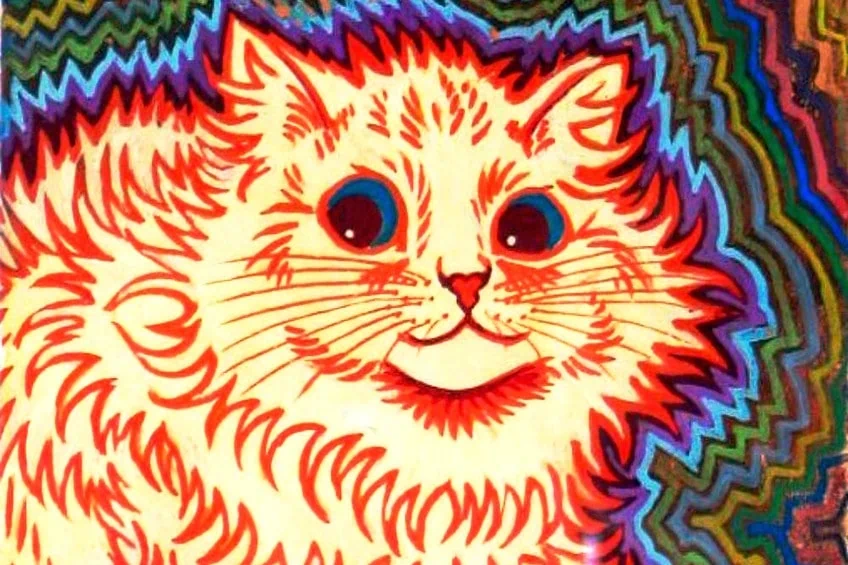Schizophrenia Art – Drawings Made by People with Mental Illnesses
Schizophrenia art refers to the paintings and drawings made by people with mental illnesses, specifically schizophrenia. Schizophrenic artwork and schizophrenia paintings have been utilized as a tool to help sufferers express themselves and experience some mental distraction and relief from their ailment. In this article, we will take a look at the schizophrenia drawings and schizophrenic paintings produced by people who suffer from this disease, as well as learn more about the artists themselves.
Understanding Schizophrenic Art
Before we start, perhaps it would be useful to understand what schizophrenia is. To give a simple definition of a rather complex ailment, schizophrenia is a group of disorders characterized by dissociation from reality, encompassing delusion and hallucinations. It also has an influence on a person’s capacity to discern the signs of this disorder.
It is an illness that has a serious effect on people’s bodily and mental health.
This is because it interferes with how your brain operates, disrupting your thinking capacity, recollection abilities, how your senses function, and other mental processes. It is a serious disorder, but it is manageable, and many individuals with it are still able to live fulfilling and joyful lives.
How Schizophrenic Artwork Is Used As Therapy
Some institutes have started implementing expressive therapies, which are multifaceted approaches that combine psychotherapy strategies with activities that encourage artistic creativity and expression. Treatment institutes propose combining various techniques, particularly art therapy, with medicine to improve an individual’s creative output, expression of emotions, interaction, perception, and capacity to connect to themselves and everyone else.
Recent research regarding the use of therapeutic art as a therapy in people with schizophrenia discovered that clinicians and patients believe art therapies or schizophrenia paintings to be a helpful, engaging, and acceptable approach.
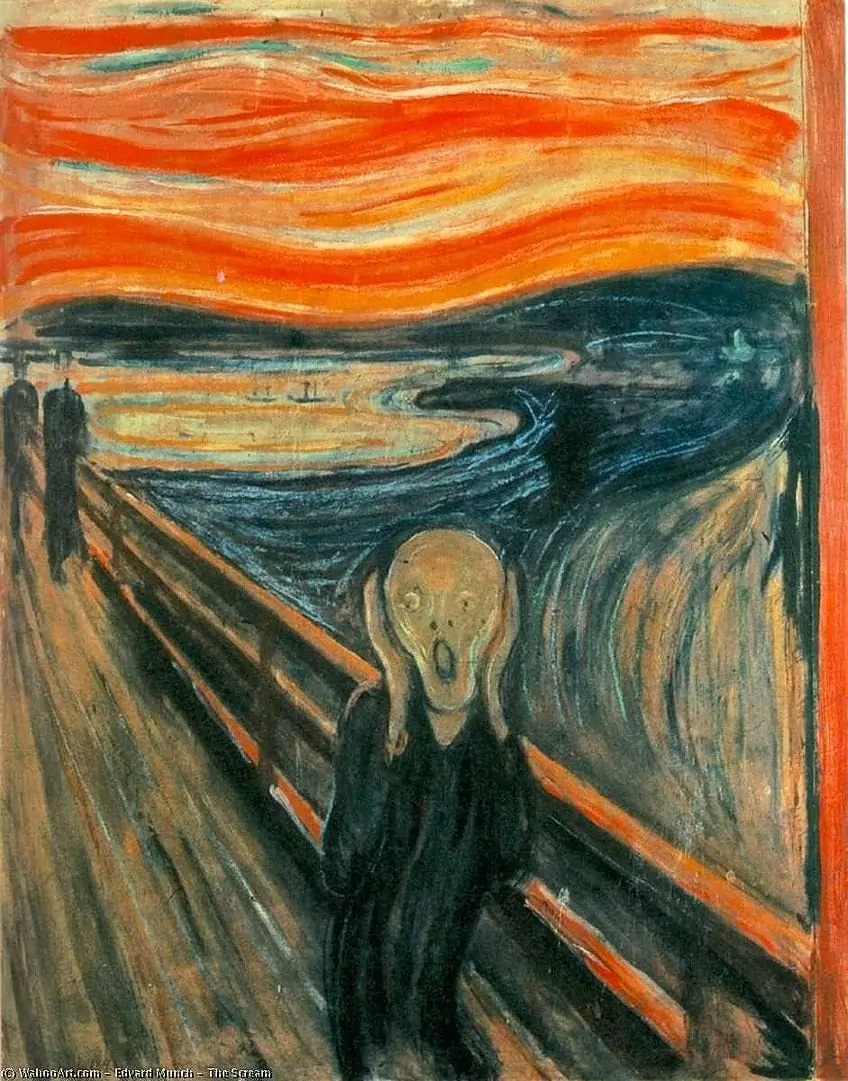
It has been observed that aberrant reasoning and cognitive decline are hallmarks of many psychotic illnesses, thereby making it challenging for people to participate in largely talk-based therapy. However, the attentive activity inherent in the creative projects enables individuals to apply their presentness to the task instead of spoken or cognitive processes.
The People Who Famously Created Schizophrenia Art
Schizophrenia is commonly accompanied by other, relatively less severe mental illnesses such as despondency and anxiety. Simply put, the combination of these conditions can be difficult to manage. Half of the individuals diagnosed with schizophrenia also battle with drug misuse as a coping mechanism.
Nevertheless, some people have found a considerably less destructive way to deal with their affliction: Schizophrenic art.
Richard Dadd (1817 – 1886)
| Nationality | British |
| Date of Birth | 1 August 1817 |
| Date of Death | 7 January 1886 |
| Place of Birth | Chatham, United Kingdom |
Richard Dadd undertook a journey in his mid-20s that led him on a lifelong path of mental disorders. Throughout the voyage that lasted 10 months, he became increasingly enraged with others, experienced hallucinations, and vowed to kill the Pope. Once he returned, his hallucinations took control; his conduct altered, his eating habits became strange, and others had difficulty comprehending what he was saying.
A doctor diagnosed him with “an intellectual abnormality” and advised mental therapy, but his father refused.
Dadd murdered his father on a leisurely stroll across the park. He spent the next 40 years of his life in several of the most renowned mental institutions in the United Kingdom. His psychological health deteriorated significantly, and he battled with delusions for the rest of his life. Because of his emotional stress, he was classified as having homicidal monomania; today we can recognize that it was in fact paranoid schizophrenia.
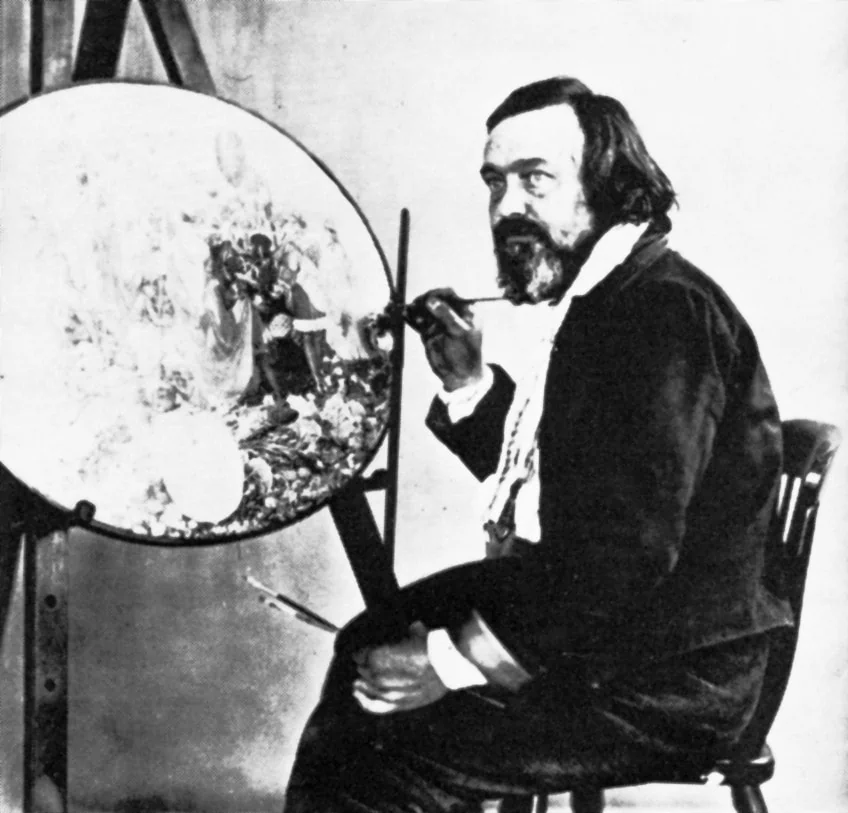 A c. 1856 portrait of British painter Richard Dadd with his painting, Contradiction: Oberon and Titania, in the background; Henry Hering, Public domain, via Wikimedia Commons
A c. 1856 portrait of British painter Richard Dadd with his painting, Contradiction: Oberon and Titania, in the background; Henry Hering, Public domain, via Wikimedia Commons
Nonetheless, he made time for his art. So much so that he spent nine years applying pigment to Fairy Feller’s Master-Stroke, a picture that became three-dimensional due to the thickness of the oil on the panel. There were no anti-psychotic drugs available during his lifetime, and perhaps no one understood how to assist him in a way that would allow him to return to public life safely.
He is, nevertheless, an instance of someone who can continue to give back through their schizophrenic paintings.
Fairy Feller’s Master-Stroke (1855 – 1864) by Richard Dadd
| Date Completed | 1855 – 1864 |
| Medium | Oil on canvas |
| Dimensions (cm) | 54 x 39 |
| Current Location | Tate Gallery, London |
Before the onset of his psychological condition, Richard Dadd had started his career as a creator of fairy paintings. He was urged to continue painting once he was institutionalized. G. H. Haydon was intrigued by Dadd’s creative talents and requested his own fairy artwork. Dadd toiled on the schizophrenic artwork for nine years, paying meticulous attention to the design and employing a layering process to achieve 3D effects.
Despite being widely recognized as his most notable piece, Dadd personally felt that the picture was incomplete.

The date of completion of the Schizophrenic art piece, 1864, corresponds with Dadd’s relocation to Broadmoor Hospital in Berkshire, the institution where he spent the next 21 years of his life. Dadd later penned a long poem in which each of the individuals in the artwork is assigned a name and objective, such as several references to old English mythology.
This was done in a seeming effort to explain that the artwork’s distinctive design was not the result of wild, uncontrolled creativity.
Louis Wain (1860 – 1939)
| Nationality | English |
| Date of Birth | 1860 |
| Date of Death | 1939 |
| Place of Birth | Clerkenwell, London |
Louis Wain, born in Clerkenwell in 1860, found employment as a teacher at the school of art, where he had also studied. He afterward worked as a freelance illustrator for trade magazines and tabloids. He made a career by making engravings for periodicals such as the Illustrated London News, which could not print images at the time. Wain’s brilliance shined through in all of the themes he worked on, and he was never short of employment.
Despite this, it was a death in the family that propelled him to fame.

He was engaged to Emily Richardson at the age of 23, but she was stricken with fatal breast cancer soon after. In her later years, they had a family pet – a cat named Peter – and to entertain her, he would make caricatures for personal pleasure, which weren’t meant for publishing. When the editors where Wain was freelancing saw the drawings, they agreed to publish several of his cat artworks. They became widespread in an instant.
People liked his cat images because they weren’t just images of cats; they were portraits of cats performing things that people did.
The Kaleidoscope Cats I (1930) by Louis Wain
| Date Completed | 1930 |
| Medium | Gouache |
| Dimensions (cm) | 22 x 17 |
| Current Location | Bethlem Museum of the Mind, London |
Wain’s mental health declined as he aged, despite his reputation as an oddball. He grew progressively verbally and physically hostile to his sisters, with whom he shared a home. In 1924, he was declared insane and confined to the paupers’ section in an institution in south London. A journalist’s identification of him there a year later sparked a high-profile push to locate him better treatment.
Within a short time, enough funds had been obtained to relocate Wain to the more pleasant environment of Bethlem Hospital.
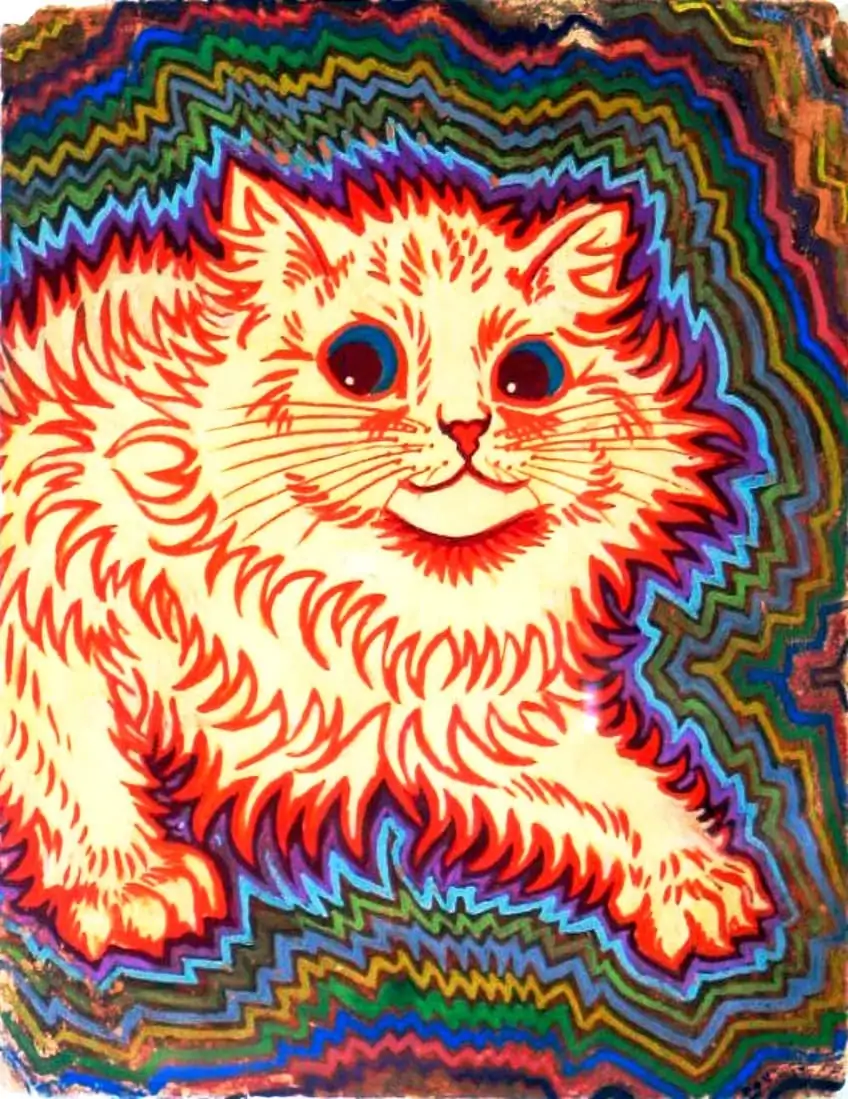
There he was free of financial concerns at the time and only created art for joy, and the institution recognized this and provided him with whatever he required to continue. One Christmas, medical workers asked him if he wanted to assist decorate the facility. Wain chose to utilize the mirrors as his medium. Cats participating in varied Christmas pastimes began to emerge on the hospital’s walls.
These works are featured in a Wain exhibit at the Bethlem Museum of the Mind, which is located on the grounds of a functioning mental facility.
Camille Claudel (1864 – 1943)
| Nationality | French |
| Date of Birth | 8 December 1864 |
| Date of Death | 19 October 1943 |
| Place of Birth | Fère-en-Tardenois, France |
Camille Claudel contributed immensely to Auguste Rodin’s artworks. She possessed the potential to become a prominent painter in her own capacity. She did, though, destroy many of her original artworks during a phase of psychological turmoil. Camille Claudel was perhaps predisposed to schizophrenia genetically, but it only manifested itself after a sequence of occurrences.
Her stormy relationship with the much-older Rodin, particularly, ended very badly, reactivating repressed childhood traumas and propelling her decline.
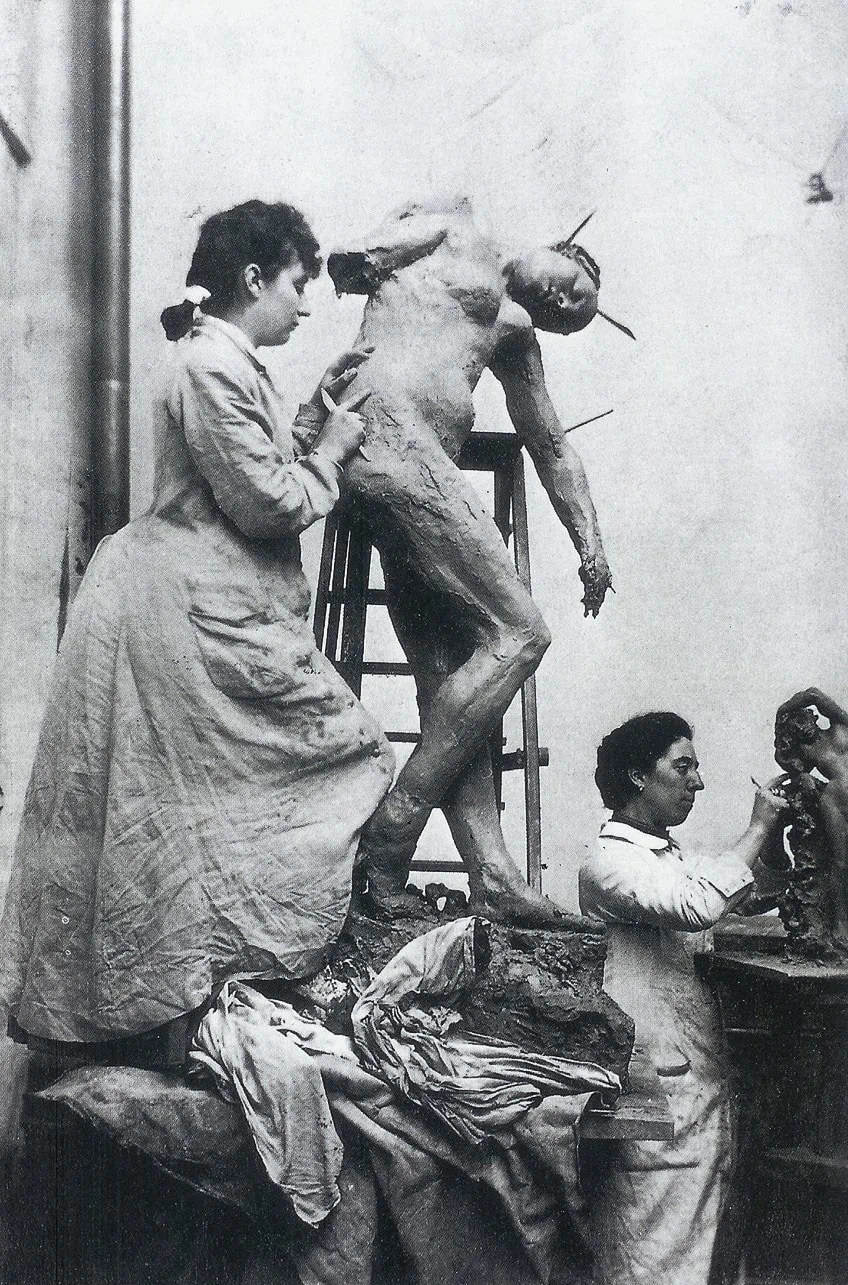
It didn’t seem to help that she had several abortions, the psychological consequences of which were never resolved. Claudel started to suspect Rodin of swiping her works, which was not entirely unjustified. She spent the vast majority of her life in an institution, even though people doubted whether she genuinely had to be there.
Schizophrenia is not a capital crime; individuals with the illness can live productive lives. Her treatment, on the other hand, was subpar.
Sadly, Camille Claudel’s family disowned her and never contacted her. At the age of 78, she passed away at the institution where she had been living. Contemplate how much more she could have given to the world if her treatment had been more sympathetic and inventive.
Young Girl with a Sheaf (1890) by Camille Claudel
| Date Completed | 1890 |
| Medium | Bronze |
| Dimensions (cm) | 10 x 5 x 5 |
| Current Location | National Museum of Women in the Arts |
Camille Claudel’s background as Rodin’s workshop apprentice allowed her to analyze the naked body and gain a deep awareness of anatomic intricacies. A sitting youthful woman leans on a large pile of wheat in this Schizophrenia art piece. Claudel used a roughly sculpted backdrop to accentuate the rigidity of the girl’s skin.
The figure’s head turns to the ides, while her arm is drawn tight to her body and her legs are crossed. By limiting overt eroticism, the position accentuates her humility.

The girl’s pose is particularly intriguing from several perspectives, allowing Claudel to portray the tension that exists behind this awkward posture. Claudel developed a clientele of private collectors by concentrating on small-scale sculptures and producing many versions to fulfill demand. She made numerous variations of the artwork, among them one in terra cotta and a set of bronze casts.
Claudel rose to prominence for exerting total control over the casting process for her works.
Agnes Martin (1912 – 2004)
| Nationality | Canadian-American |
| Date of Birth | 22 March 1912 |
| Date of Death | 16 December 2004 |
| Place of Birth | Macklin, Canada |
Agnes Martin lived her whole life, until she passed away at the age of 92, without telling many people about her disease. Yet, upon her death in 2004, additional facts became known. She disliked the idea of her condition having any connection to her paintings. Some, though, have said that her austerity is an effort to bring order to her inner turmoil. Agnes Martin, who was raised on a ranch in Saskatchewan, traveled to the United States with the intention that she would become a teacher in 1932, and relocated to the flatlands of New Mexico.
After getting a degree in art instruction, she painted abstract art with organic patterns, which drew the notice of famous New York gallerists who urged her to join their lineup and relocate to New York.
Martin established her characteristic style of colored canvases covered from end to end with painstakingly penciled grid systems and finished with a thin coating of gesso throughout the next 10 years. Though she frequently exhibited with other abstractionists, Martin’s dedicated pursuit explored new territory that was outside of both Abstract Expressionism’s vast expressive language and Minimalism’s methodical patterns.
Instead, her approach was spiritual in nature, drawing on Zen Buddhist and Transcendentalist beliefs. Art, for Martin, was a universe without things, interruptions, or obstacles. It is to embrace the requirement of entering a field of view in the same way that you would traverse an empty beach to gaze at the waves.
She left New York in 1967, at the peak of her success, to return to New Mexico, where she eschewed painting in favor of literature and meditation.
Her comeback to art in 1974 was distinguished by a slight change in aesthetic: compositions were no longer limited by the tiny graphite grid, but by larger geometric designs that seemed far removed from her earlier works stylistically. Martin recreated the warm color of the parched desert terrain where she spent the remainder of her life in her final works.
Happy Holiday (1999) by Agnes Martin
| Date Completed | 1999 |
| Medium | Acrylic on canvas |
| Dimensions (cm) | 152 x 152 |
| Current Location | Tate Modern, UK |
In this work by Martin, the square visual field of this painting is split into 14 horizontal bands uniformly spaced that alternate in color between peach and white, with pastel blue employed for the upper and lower two bands. Fluctuating graphite pencil lines define this striped design. Happy Holiday, like many of Martin’s paintings from this era, began by priming the whole canvas with an opaque covering of gesso, which gets never completely covered by succeeding layers of color.
The thick gesso seals and emphasizes the somewhat toothy roughness of the linen canvas framework, giving the artwork an overall aesthetic starkness and vivid brilliance.
On top of this foundational coat of paint, the painter measured and drew the horizontal lines that cover the breadth of the painting with a pencil and a small ruler. This trembling, gradual method of demarcation emphasizes the importance of drawing in Martin’s work.
The blue and peach colors used in Happy Holiday were painted using a new sort of acrylic which creates a transparent and light-reflective quality.
When examined up close, the colored paint strays further than the delineation of the graphite lines, giving the piece a painterly and hand-made appearance that circumvents the geometric stiffness of the design. Geometry can be defined as an abstracted order structure concerned with the relationship between forms. It alludes to form excellence that does not occur in the natural environment. In comparison, the rectangles Martin depicts inside her canvases’ square patterns are uneven and imprecise.
As we have learned today, Schizophrenia drawings made by people with mental illnesses were commonly created to enable sufferer’s a way of expressing themselves. Schizophrenic paintings were not only a mental escape from their anguish but also displayed deep creative abilities. Many of the artists of these Schizophrenic artworks, unfortunately, lived in a time when proper treatment was not available to them.
Take a look at our mental illness art webstory here!
Frequently Asked Questions
What Exactly Is Schizophrenia?
Schizophrenia can be a rather debilitating sickness that has a negative impact on people’s physical and mental health. This is because it disrupts how your brain functions, interfering with your thinking ability, remembering capabilities, how your perceptions perform, and other brain functions. It is a serious disorder, yet many people have found ways of treating it and living with it to the best of their abilities.
How Can Schizophrenia Art Help Those Who Suffer?
Based on recent studies on the rehabilitative use of art in schizophrenia, researchers found that both doctors and patients agreed that schizophrenia paintings and art treatments were beneficial as a treatment. Many psychotic conditions have been shown to be characterized by abnormal thinking and cognitive deterioration, which makes it difficult for patients to engage in mostly talk-based therapy. Yet, the focused engagement included in creative endeavors helps people to focus on the work at hand rather than speaking.
Jordan Anthony is a Cape Town-based film photographer, curator, and arts writer. She holds a Bachelor of Art in Fine Arts from the University of the Witwatersrand, Johannesburg, where she explored themes like healing, identity, dreams, and intuitive creation in her Contemporary art practice. Jordan has collaborated with various local art institutions, including the KZNSA Gallery in Durban, the Turbine Art Fair, and the Wits Art Museum. Her photography focuses on abstract color manipulations, portraiture, candid shots, and urban landscapes. She’s intrigued by philosophy, memory, and esotericism, drawing inspiration from Surrealism, Fluxus, and ancient civilizations, as well as childhood influences and found objects. Jordan is working for artfilemagazine since 2022 and writes blog posts about art history and photography.
Learn more about Jordan Anthony and about us.
Cite this Article
Jordan, Anthony, “Schizophrenia Art – Drawings Made by People with Mental Illnesses.” artfilemagazine – Your Online Art Source. August 15, 2022. URL: https://artfilemagazine.com/schizophrenia-art/
Anthony, J. (2022, 15 August). Schizophrenia Art – Drawings Made by People with Mental Illnesses. artfilemagazine – Your Online Art Source. https://artfilemagazine.com/schizophrenia-art/
Anthony, Jordan. “Schizophrenia Art – Drawings Made by People with Mental Illnesses.” artfilemagazine – Your Online Art Source, August 15, 2022. https://artfilemagazine.com/schizophrenia-art/.


